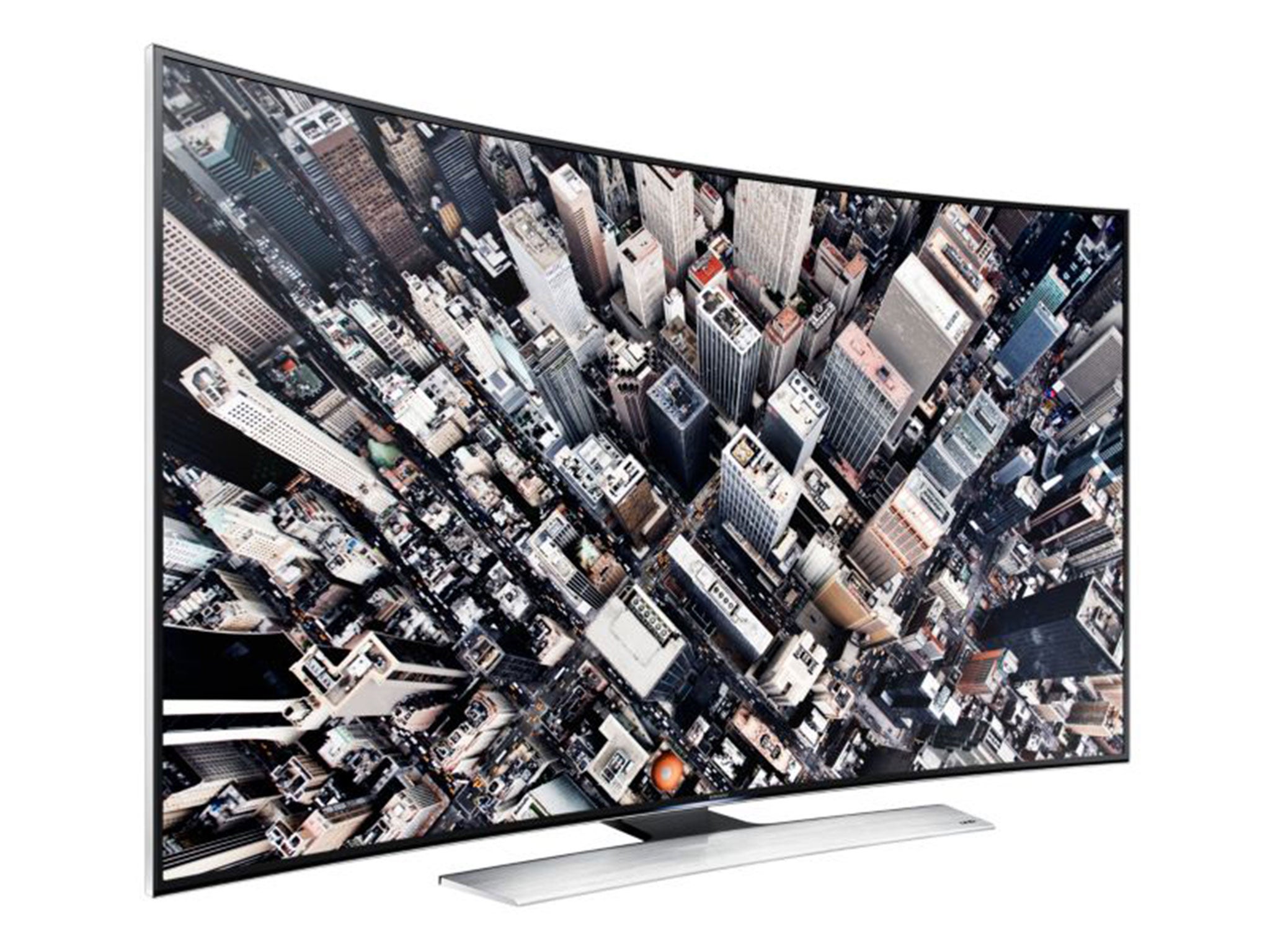Do you need a curved TV? We talk to Samsung about their newly launched curved sets
<b>David Phelan</b> talks exclusively to Samsung’s UK President about the next big thing after the next big thing: curved TVs

In the last few days, the world’s first Curved UHD TV went on sale from Samsung. If you’ve not had cause to buy a new TV in recent days then all this might need a brief gloss: UHD is short for Ultra High Definition, also known as 4K, and is, apparently, the coming thing for TVs.
No, really; not the coming thing like 3D was (because who wants to watch TV wearing glasses?) but the actual coming thing. TV images getting sharper and more realistic is something we can all understand and UHD - also known as 4K - is what's going to do it. At a resolution of 3840 x 2160, 4K screens have four times the pixels of full HD screens and they looks astonishing - just like the real world instead of, you know, TV. The problem is that right now, there isn’t much to watch in native 4K resolution but as we’ll see, there are ways round this.
Now, how about curved? The 55-inch screen is concave. It’s easy to understand what this is, but why it’s a good thing is trickier. After all, flat works fine, doesn’t it? The curve is gentle and not unattractive. Some film industry experts say it works best because it follows the natural curvature of the eye, and after all, cinema screens have a little curve to them, too. Still, it does look a little unusual, especially when mounted on a wall.
Andy Griffiths is the first President of Samsung UK and Ireland who isn’t a Korean. An Englishman with considerable charm and the salesman’s gift for straightforward talk, Griffiths is passionate about his company’s products. He talked exclusively to The Independent at the launch for the Curved UHD TV.
“Tonight we’re launching curved TV because it’s the next stage of how people can enhance their viewing experience,” Griffiths explained. “And there’s a couple of key elements behind that. The curvature, which matches the sort of experience people are more used to in the cinema, gives you a more immersive experience and that’s broadly because that’s the way the human eye absorbs images more comfortably. And I think the combination’s key here because with the UHD signal it allows you to access much bigger screen sizes. So 55-inch and 65-inch are becoming more ubiquitous screen sizes.”
This last point makes sense: the increased resolution of UHD means it’s better to sit closer to the TV than before – you really can’t see the pixel structure on 4K from even a short distance. So how about curved?
“Curved makes even more sense because with that high-resolution image then whether it’s sport or film these TVs really will be the way to get the best out of that fantastic content.”
It’s certainly easy on the eye, especially if you sit dead centre, though viewing angles are uniformly excellent and, of course, the 4K resolution helps. This TV isn’t cheap, but considering that the price of most UHD sets a year ago was over £25,000, this is more competitive; with the 65-inch model costing £4,000 and the 55-inch starting at around £2,000.
These are TVs that people will live with for many years,“ Griffiths said. “Of course, technology is famous for being a little bit chicken and egg between the content and the devices, but our devices are ready and more and more content is coming so we’re offering that full facility from today.”
So what’s his answer to the problem of minimal availability of native 4K content? After all, broadcast 4K is at least a year or two away. “HD resolution will also look great on this TV particularly since they upscale to UHD level.” Upscaling, you’ll know, is where the TV takes a look at the pixels and works out what would be missing if the HD content was 4K. So between a red pixel and a white one, say, there’s probably a pink one. The TV inserts the extra pixels to bring the image up to 4K resolution.
As Griffith explains, “The result is not exactly the same as UHD but it certainly gives you an enhanced experience. It was the same kind of technology we used before Full HD became common when we were bouncing up from the standard definition at that time. It did give people a taste of the experience. But we’re also enhancing that with our own set of content and capability. We’re providing a number of content packages through our friends at Netflix for example. So there’s an immediate base of 4K content available and there’s a lot of people in TV and film production who are using 4K as a standard so it’ll soon build up as a base."
The Netflix angle is particularly interesting: programmes like House of Cards and Breaking Bad were all shot in 4K resolution. If you have a Netflix subscription and a broadband connection of a 20Mb speed or higher, you can – right now it seems – stream programmes to compatible TVs as UHD. But be warned, it spoils you for anything less.
So is the Curved TV worth its purchase price? Actually, the UHD alone is worth this money and the curve doesn’t get in the way. In fact, sit in the right place and it feels immersive, as Griffiths says. Even if it does take a little getting used to.
Subscribe to Independent Premium to bookmark this article
Want to bookmark your favourite articles and stories to read or reference later? Start your Independent Premium subscription today.

Join our commenting forum
Join thought-provoking conversations, follow other Independent readers and see their replies